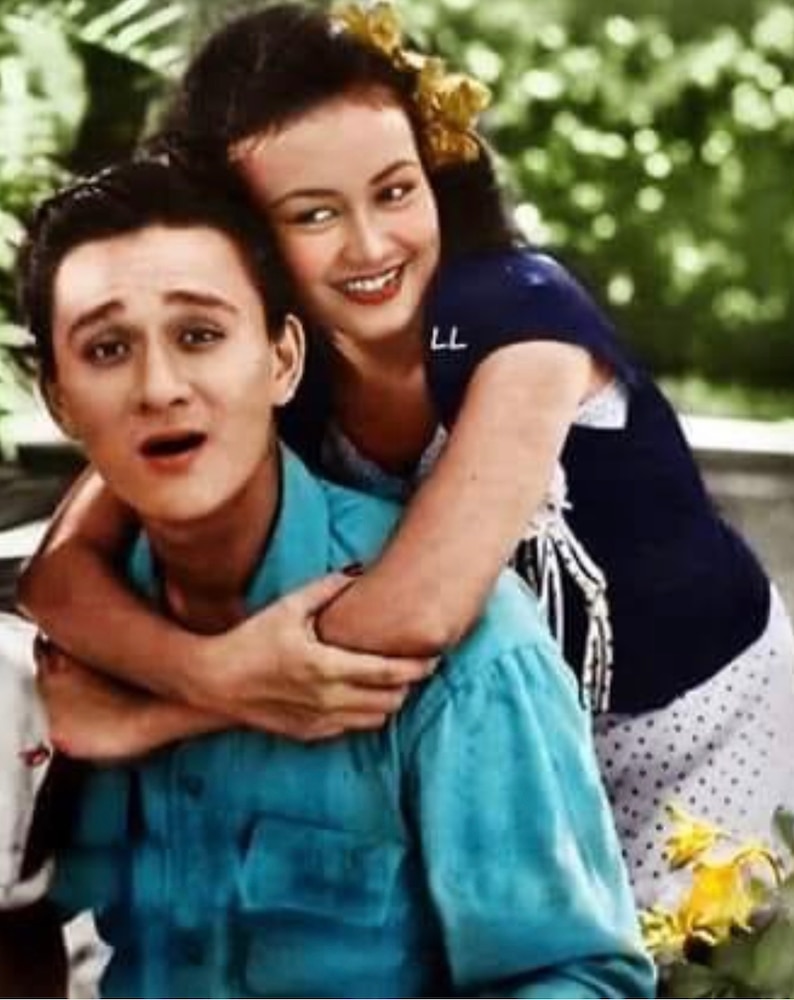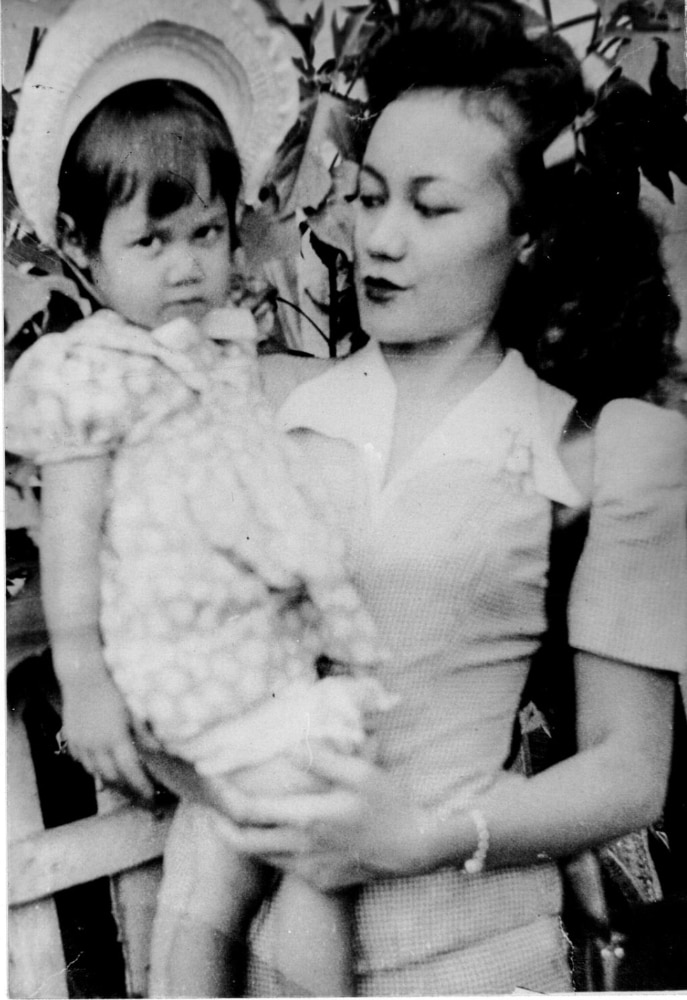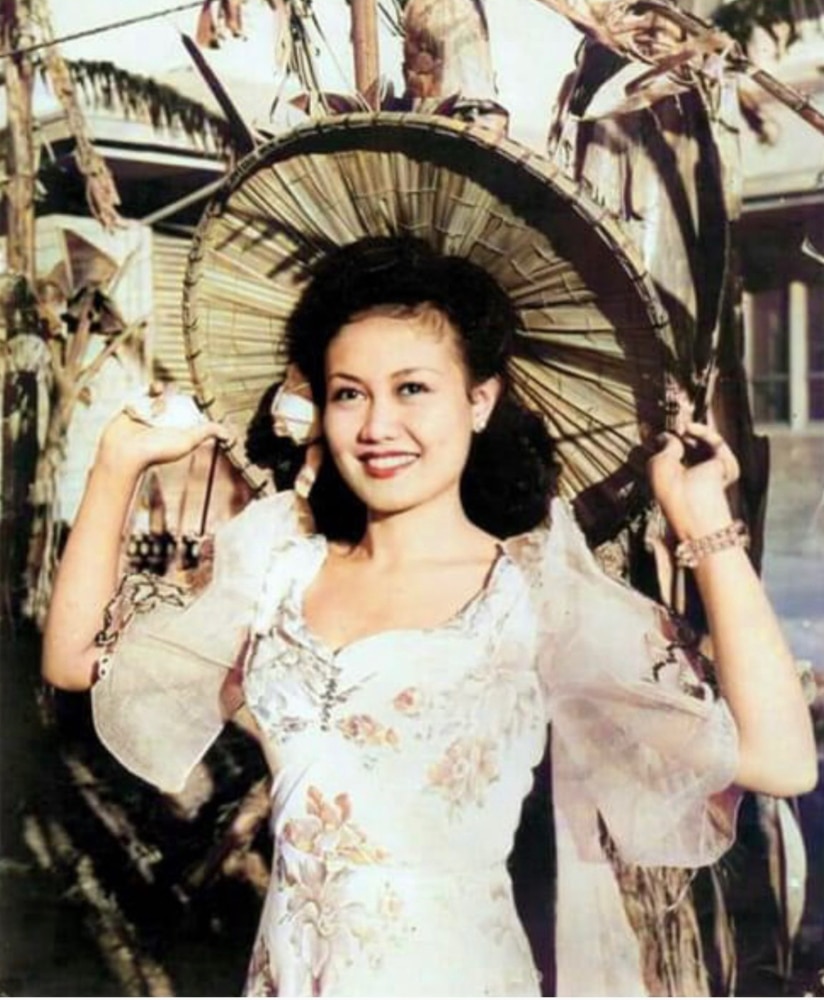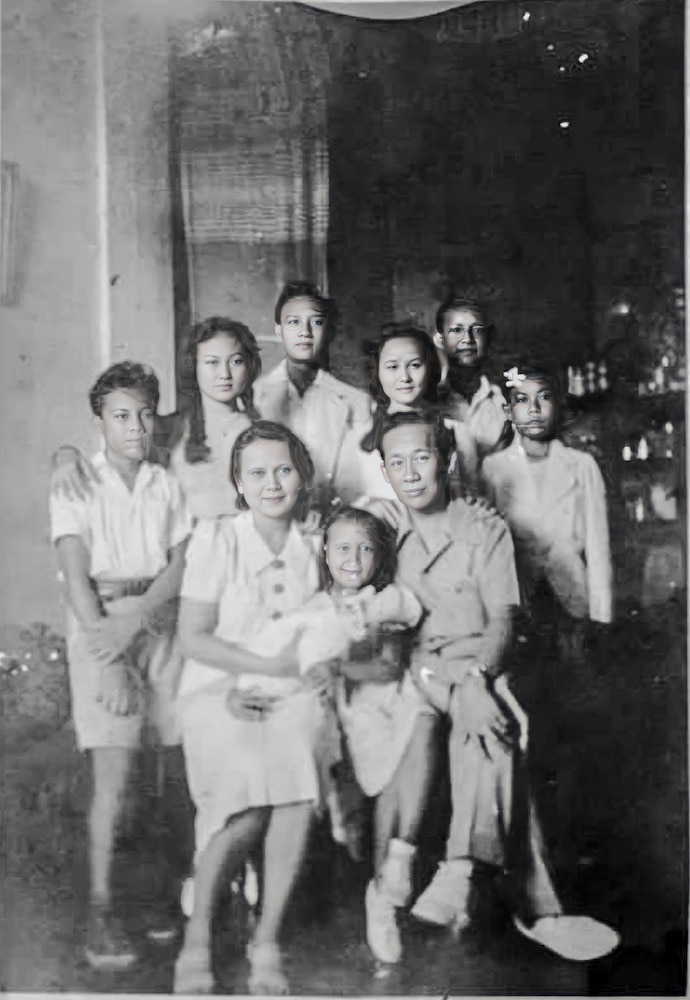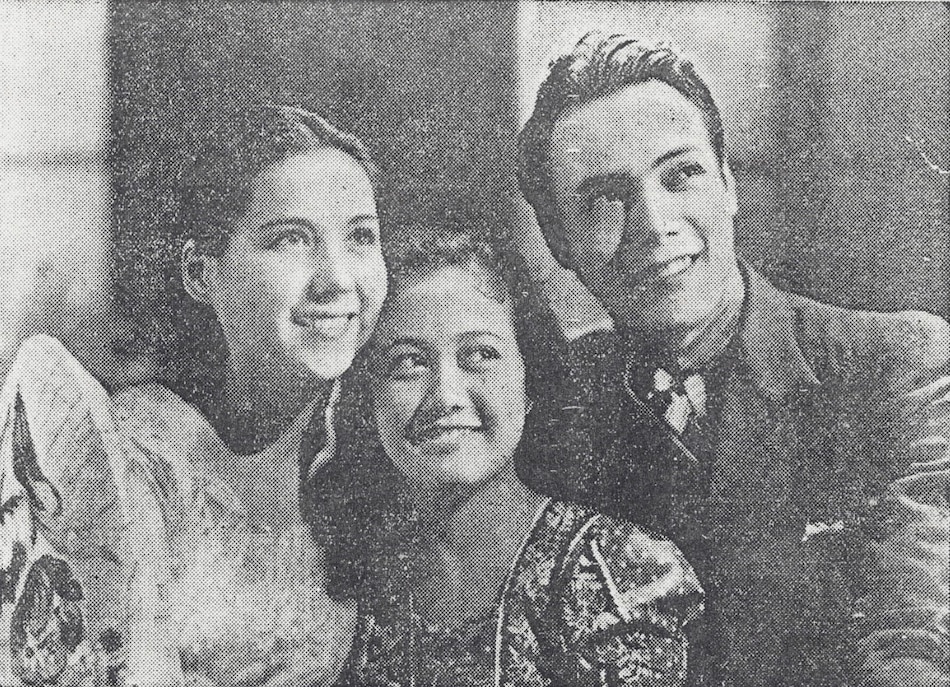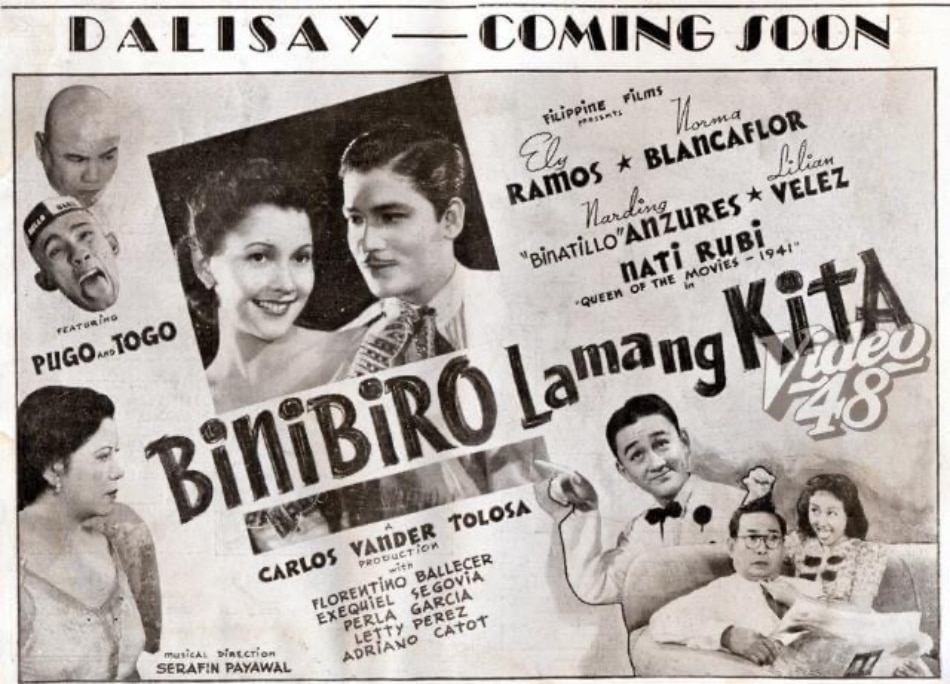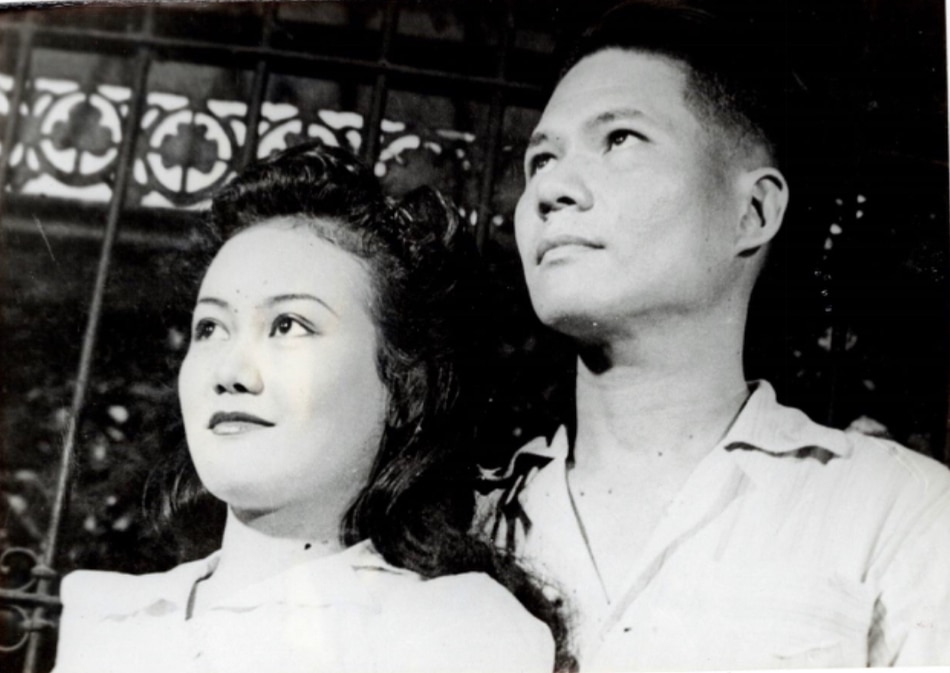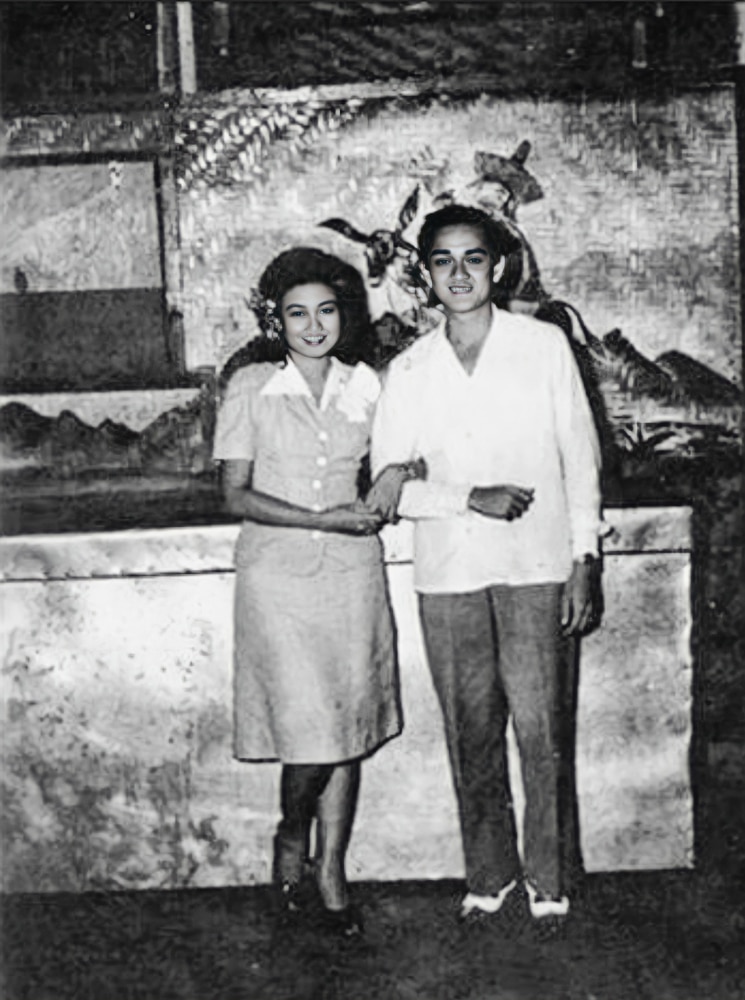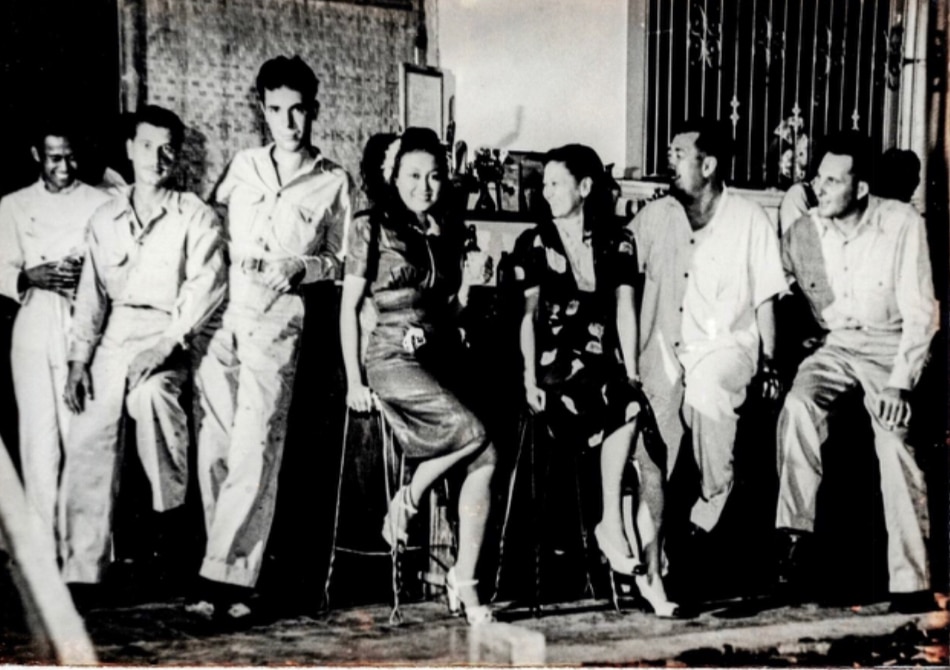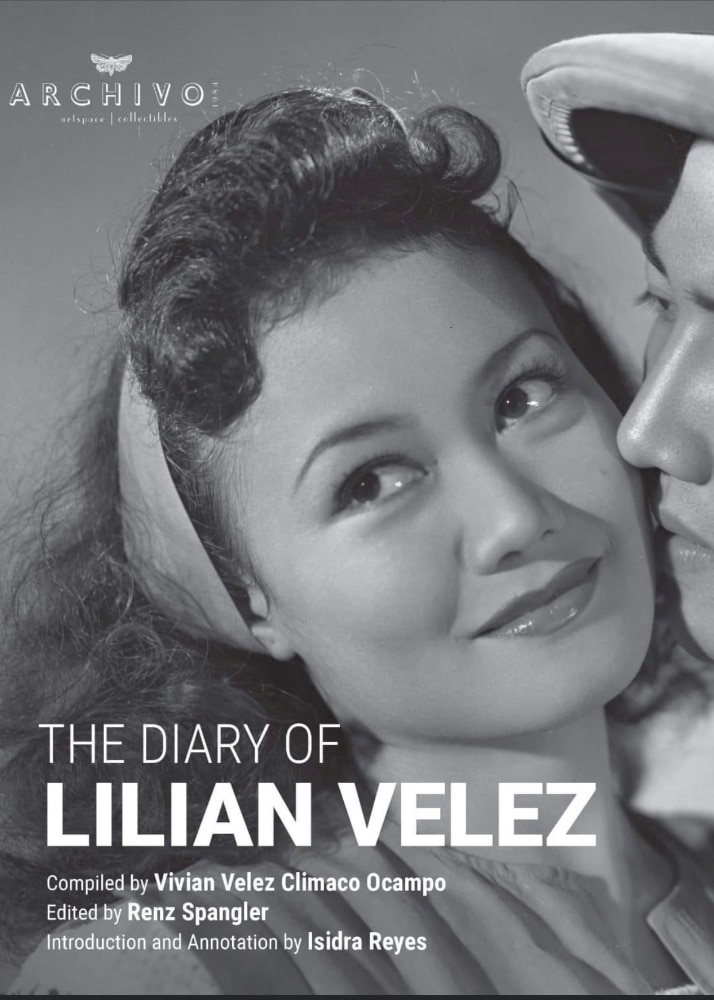“A piercing scream, blood-curdling and long cut through the friendly stillness of the night, blade-like.”
So goes the opening line of Ruben T. Jose’s article in the entertainment magazine, Movie Confidential, about the murder of Filipina star of radio and screen Lilian Velez. Written a few years after the sensational crime elicited shockwaves worldwide, it reported about the early Sunday morning when police found the actress’ body. “The prowlers (the Philippine Constabulary or P.C.) were speeding to Pulog Street at Sta. Mesa Heights, in response to an anonymous phone call reporting ‘something tragic’ that happened at the residence of the Climacos.”
The report goes on: “As police officers entered the fashionable chalet, a housemaid announced with tragic finality: ‘Lilian Velez is dead!’ Police officers found the sala furniture topsy-turvy. Chairs and tables were overturned and shattered, ornamental glasses littered the floor. At the center of the room was a blot of blood, the beginning of a crimson trail to a bedroom. A policeman, entering the bedroom, was taken aback.
“Just below the bed was the body of a beautiful woman, with face downward, her hands in a frustrated last supreme effort to reach the bed. The beautiful victim was Lilian Velez, 24-year-old radio and movie star...Love unrequited took a gruesome toll when Lilian Velez, the country’s most beloved movie personality died in the hands of Narding Anzures.”
Going over newspaper accounts of the murder, one realizes how big and sensational the story was when it first hogged the headlines of broadsheets and tabloids on 28 June 1948.
“Child Names Manila Movie Beauty’s Killer,” said the New York Daily News. “Lilian Velez, Star of Radio and Films, Slain in Philippines,” reported The Boston Daily Globe. “Under a Spell, Leading Man Kills Filipina Film Star” screamed the Fort Worth Star-Telegram.
Even The New York Times had its own story on the murder entitled, “Actress is Slain, Leading Man is Held.”
“A beautiful Filipino radio and film actress and her maid were stabbed to death about 2 A.M. yesterday. Early today Manila police announced her leading man had confessed. Lilian Velez and her 17-year-old maid were killed with a hunting knife. Several hours later the actress’ 4-year-old daughter, Vivian, named the slayer. She said she saw her mother killed.
“The film actor, Narding Anzures, 21, was taken to the police station in suburban Quezon City by Manila’s Mayor Manuel de la Fuente this morning after surrendering voluntarily to the official. Police quoted the actor as saying: ‘I did it. I don’t know what happened or how. I was under a spell. I do funny things sometimes and everything just goes blank.’
“City Attorney Jose Fernandez said he expected to file murder charges against Anzures later in the day.”
In a headline article of The Manila Times dated June 30, two cases were filed against lone suspect Bernardo “Narding” Anzures: one for the murder of Lilian and the other of her housemaid, Pacita Doe (her family name was unknown at the time of filing) based on the testimonies of the child Vivian Velez Climaco, and their housemaid, Nenita, the two eyewitnesses.
But why would an erstwhile leading man kill his screen partner and put an end to her promising career as singer and actress? Was it unrequited love? Betrayal? Frustration? Jealousy? Or was it just what the papers called “fantastic spell”?
Who was Lilian?
There indeed remain questions about Lilian Velez’s death, an event that might have overshadowed the colorful life she lived and the contagious joy she derived from it, as well as the lessons she took away from its unique challenges. She was a performer, after all, and a woman, working during wartime Philippines. That life is captured in the singer-actress’ own words, in her own diary out this month, published by Archivo 1984 and Arc Lico. It was writer Renz Spangler whom Lilian’s family entrusted with the manuscript. Spangler, who has authored books on Philippine cinema’s early stars, brought the diaries to the attention of Archivo and Arc Lico.
The 230-page tome is generously illustrated with photographs that all the more bring Lilian’s journey to life, and help us imagine a working Filipina’s struggles amidst the war and after it. Says architect Gerard Lico of Arc Lico when asked how he would describe Lilian after reading the diary: “Lilian was a dedicated wife, mother, and performing artist. She took care to fulfill her responsibilities in these aspects–trying as much to fulfill the social expectations for a woman of the period–and you can see in the diary when these aspects of her life clash. She was independent-minded: she had her own opinions about the events of her time, and even with things such as having a level of financial independence from her husband.
“She saw the need to further her craft and how this would be crucial to her providing a good life for her daughter Vivian. She was indeed an epitome of a modern Filipina, redefining the role of women in a postwar society aspiring to be modern and democratic.”
Born in Cebu on 3 March 1924, Lilian Cananea Velez belonged to a musical and artistic family. She was the eldest of six children. Her father, Manuel Gabor Velez, was a renowned composer, bandleader, music teacher, and music publisher. Her mother, Concepcion “Ipyon” Mabunay Cananea of Carcar, Cebu, was a famous sarsuwela star. She was known as the Siloy (Nightingale) of Cebu and Manuel served as conductor in the sarsuwelas she appeared in.
At a young age, Lilian already showed promise as a singer. She had her first crack at stardom in 1938 when she joined and won first place in an amateur radio singing contest during a special remote broadcast in Cebu City of KZRM-Radio Manila, a radio station managed by Jose “Joe” Climaco.
The Visayan songbird’s rendition of her father’s composition, “Sa Kabukiran,” won not only the admiration of radio listeners but also the heart of fellow Cebuano Climaco, composer, actor, stage director, and Hollywood-trained film director, who would become Lilian’s mentor, director, and partner in life. They were married in the midst of World War II in a quiet church ceremony in San Juan Del Monte on January 2, 1942 when Lilian was only 17. Only the priest, the sacristan, and Lilian’s father and aunt were with the couple during the ceremony. Joe’s close friend and Filippine Pictures boss, Don Jesus Amado Araneta, and his wife, Ester, were the principal sponsors.
Joe and Lilian were blessed with a daughter, Vivian, born on May 4, 1944. Soon after winning the amateur radio singing contest, young Lilian was on her way to becoming a recording star like her mother. Eventually, Lilian would also be a movie star, her first moving picture being Guillermo J. Icasiano’s “Naglahong Dambana” (1939). As recounted in the article entitled “Cream of Local Movieland Joins Filippine Films,” published in Filippine Films Extra: “Of the new talents signed up for Filippine Films production, Lilian Velez deserves special mention. Miss Velez comes from a Visayan family of musical artists...Filippine Films talent scouts persuaded Miss Velez to come to Manila for a screen test…(At first, she could not speak a) single word of Tagalog. But after a month of arduous study, she learned the dialect and in ‘Naglahong Dambana,’ she speaks Tagalog like a native and sings Tagalog songs with verve and feeling.”
Encouraged by the good reviews Lilian received for her screen debut, it did not take long for Filippine Films to cast her in a second film. The movie was “Inday” (1940) with the Singing Sweetheart of the Philippines, Elsa Oria, and Ernesto La Guardia, in lead roles. Directed by Lamberto V. Avellana based on a story by Daisy Hontiveros-Avellana, “Inday” is set in Iloilo and Manila. Notably, the movie’s theme song, “Balitaw ni Inday,” was composed by Lilian’s father, with lyrics in Tagalog by D. Santiago, in Ilonggo by P. Villaluz, and in Cebuano by M.P. Velez himself.
Enter Narding
Lilian’s third movie would be the start of her pairing with Narding Anzures who is a former child star. Born Bernardo “Narding” Aguirre Anzures in 1928, he was the unico hijo of popular actors Miguel Anzures and Rosa Aguirre.
Narding’s early movies were ominous of his tragic end. He made his screen debut in Tor Villano’s horror classic, “Taong Demonyo” (1937), based on Jose Esperanza Cruz’s “masterpiece” published in Liwayway. Produced by Filippine Films, the movie had a star-studded cast led by Rosa del Rosario and Gregorio Fernandez. The young Narding played one of the children of the Devil Man named Manoling, sired out of the latter’s insatiable lust for women. Narding’s second movie was “Batang Tulisan” (1938), directed by Rod Avlas, and also under Filippine Films. Here, Narding played the young son of a bandit queen.
Narding was already famous when he was paired for the first time with Lilian in “Binibiro Lamang Kita” (1941), a light comedy directed by Carlos Vander Tolosa for Filippine Films. Starring Ely Ramos and Norma Blancaflor as the main leads to Narding Anzures’ and Lilian Velez’s junior leads, the film also featured Queen of the Movies 1941 Nati Rubi and the comic team, Pugo and Togo. Among the songs featured were the theme song, “Binibiro Lamang Kita” and “Ako’y Kampupot,” the latter composed by Lilian’s father, Manuel.
Narding and Lilian instantly clicked as a love team: Lilian’s bewitchingly cute coyness complementing Narding’s youthful goofiness. But the coming of World War II put a temporary halt to the movie careers of the two actors. As mentioned earlier, Lilian was wed to film and stage director Joe Climaco shortly after the war broke, specifically on 2 January 1942, which the actress, writing in her diary, described as “a day of looting, fire, rapes, and other atrocities.” Her marriage to Joe, however, did not stop Lilian from pursuing her career as a performer, shifting only from screen to stage.
It also didn’t stop producers from putting Lilian and Narding in projects together. Perusing print ads published in The Tribune from 1942 to 1943, one sees at least three stage presentations featuring Lilian in the cast, two of which also starred Narding. Opening on 29 August 1942 at the Life Theater was “The Sultan’s Harem,” a full-length musical extravaganza. Opening on 6 March 1943 was “The Missing Scorpion” which featured Lilian with Narding plus Tito Arevalo, Linda Gorrez, Gil de Leon, Miguel Anzures, Sepo, Ngongo, Abe Tugak, and Santos Reyes. Lilian and Narding would appear too in the stage production, “Kahapon, Ngayon at Bukas.” All stage presentations were directed by Lilian’s husband, Joe Climaco.
Thereafter, Lilian must have slowed down in accepting stage presentations as she was already pregnant around the early part of August 1943 and would give birth to her daughter, Vivian, the following year.
Wartime
While Lilian and her family survived World War II, they were not exactly spared from its cruelties. In her diary entry dated 14 January 1948, Lilian wrote about a recurring panic attack she occasionally experienced whenever she recalled the arrest and torture of her husband, Joe, in the hands of the Japanese military:
“Sang at my worst during the Star Margarine program. I got so nervous and tired that my heart beat too fast. I also had a terrible pain in my spinal column. My hands were cold and I couldn’t seem to take the high notes. It felt like they got stuck in my throat,..Ever since my husband was taken away from home, placed in Fort Santiago, and tortured, that awful feeling I had felt when the Japanese broke into our bedroom in the middle of the night with bayonets and tied Joe after ransacking our place--that disgusting pain and feeling--keeps coming back whenever I feel tired and have to sing.”
In an earlier entry dated 2 January 1948, their sixth wedding anniversary, Lilian further recalled her husband’s incarceration at Fort Santiago: “Well we’ve been together ever since (we got married), in happiness, in sickness, in sufferings. The only time we were separated was when he was imprisoned by the Japs at Fort Santiago, and tortured there for 21 days, while I went and approached one influential person after another for help. There was one good Japanese friend who did his best by giving me news and bringing a hidden letter from my husband telling me not to worry--he was alright. The Japanese friend risked his life by going over to Hubby’s prison cell and giving him a mat to sleep on. The cement floor was filthy; worms crawled over sleeping men--what with only a can filled with human excrement in the same small cell...O Lord deliver us!”
Later on, with the horrors of war behind them, Lilian would write about looking forward to a bright future ahead with Joe and Vivian. Lilian wrote in her diary entry for New Year’s Day, 1946: “Now, with a liberated Philippines, we have a lot to be thankful for--thankful that it’s all over--that there’s plenty of genuine food to eat (especially canned food), clothing to protect the body, and other necessary things that make living worthwhile.”
Lilian further wrote: “As for hubby and me, we have a very fine job in the Special Service. I find pleasure in entertaining soldiers, and, sometimes, WACs (Women Army Corps) from different camps or outfits. To me, they are the best audience I have ever had--so responsive, so appreciative, and so cooperative...as for salary, we each get hundreds of pesos weekly, making us the highest-paid Filipino entertainers in the Special Service.”
Despite her occasional complaints about her husband being a tightwad, unappreciative, and lacking in affection, Lilian was still very much in love with Joe. As she wrote in a diary entry April of 1946: “Oh, it is all right to economize but not too much when it concerns one’s living conditions and especially when one has a steady job and good pay...I convinced him to keep my own bankbook (I had reasons)...Now I even hesitate to tell him whenever I want to draw my money from the bank to buy me a nice costume and dress...
“And he was not appreciative either. He didn’t even kiss me. Those little things, little attentions are what I crave for. That’s why at nights, I always remind him to love me, not only in bed, but on all occasions, anywhere--and by this I mean--a little kindness and a little understanding. I don’t ask much. Just this: that he should love me at all times...Because I love him. Because God was before us when the sacred ceremony was performed. Because we have a baby now. Because marriage is supposed to be understanding, companionship, for better or for worse--and we have been through worse. Now we should go on hand in hand. Oh, God, help us! Lead us in the right path and deliver us from sin.”
New beginnings
Lilian’s diary is studded with accounts of her and Joe’s engagements not only in Manila and suburbs but also in the provinces: at the Rizal Memorial Stadium, at the Cielito Lindo (one of the best nightclubs with a swimming pool in Manila), at the Roosevelt Club (at the Manila Jai Alai), at the Wack Wack Golf & Country Club, at the Teaf in Fort McKinley, at the swanky Officers’ Club, at the Talon Club, at the Base 96 Club, at the Falcon Club, and at the VASSAC Officer’s Club as well as at various U.S. Army and Navy facilities at the Pandacan Depot, the Port Area, the Nielson Field, the Quezon Air Strip, Nichol’s Field, Camp Murphy, Mariquina, Santa Mesa, La Loma, Alabang, San Francisco Del Monte, Antipolo, Baclaran, Grace Park, and Subic Bay.
Apart from the usual floor shows and song and dance routines with band music, Lilian and Joe came up with special shows which delighted their audiences. The two were likewise invited to perform in various radio stations like KZCM where Lilian sang and at KZFM where she had a radio broadcast for the National Food Product. She was also a guest performer in the Star Margarine Program and the Quaker Oats Hour.
In her New Year’s Day diary entry for 1948, Lilian wrote: “New Year! And it seems brighter for my husband and me. We’ve got a new radio program on KZPI from 7:00 to 7:30 on Saturday evenings, which will start very soon. This thirty-minute program ...stars my husband’s orchestra, the Silos sisters, and myself. I get fifty pesos per broadcast, and my husband, seventy-five, for arranging the music and handling the whole thing. And the best thing is that it was pleasant and enjoyable.”
Making movies again
After an absence of five years, Lilian returned to the silver screen in “G.I. Fever, My Kano!” (1946), a movie musical co-produced by Three-Star Films and Monserrat Enterprises Co. Ltd., directed by her husband, Joe.
The movie featured many hit songs composed by Joe himself, sung and danced by Lilian and other cast members. Unfortunately, no diary entries could be found on the making and premiere of “G.I. Fever” as Lilian’s diaries from September 1946 to December 1947 are missing. As noted by her daughter, Vivian, who compiled and transcribed the diaries, “the writer (her mother, Lilian) either didn’t record the happenings, which is most unlikely, or the diary of 1947, if there was one, disappeared after the writer’s death.”
Like Lilian, Narding Anzures made his film comeback shortly after the war in Lamberto V. Avellana’s “Death March” (1946), produced by Philippine Pictures, and featuring Leopoldo Salcedo, Norma Blancaflor, and a “cast of thousands.” It was described as a “a historic portrayal of a people’s struggle for freedom and democracy amidst a reign of terror and suppression.”
Lilian and Narding were reunited onscreen the following year, in Fermin Barva’s “Ang Estudyante” (1947) produced by Felipe L. Abel’s Philippine Pictures. Promoted as “A Musical Melodrama of College Life,” it was typical of the youth-oriented romantic drama musicals of the time. The movie was based on a story by P.Y. Sulit with music by Lilian’s husband, Joe Climaco.
Manuel P. Velez’s “Sa Kabukiran,” the song which paved the way for Lilian’s career as a popular singer, radio and stage personality, and screen star, was finally made into a movie in 1947 and would be the last pairing of Lilian and Narding under the direction of Lilian’s husband. It also had music by Lilian’s father, Manuel P. Velez, and featured the three- year-old Vivian.
Again, not much could be found about the film’s making in Lilian’s extant diaries except for this brief note in her New Year’s Day entry for 1948: “Another bad luck we had was that ‘Sa Kabukiran,’ the last picture we made, gave us a lot of trouble and headaches and financial shortcomings due to the backer’s irresponsibility. We also have been out of work for months, until now.” The movie was produced by Philippine Pictures with Felipe L. Abel as Executive Producer.
In the same diary entry, Lilian wrote about another misfortune: “Last year hasn’t been too kind to us. We were swindled of 4,550 pesos, which Hubby gave, as an advance payment for the building of our house. To a Mr. Juasan, alias Dickadoo, who turned out to be a smart crook.” Nonetheless, “
The lull in her career allowed Lilian to build and furnish her and Joe’s home in Pulog Street, play housewife, and spend quality time with her daughter. Photos from Lilian’s family albums later shared by Vivian show Lilian as a devoted mother and homemaker, caring for her daughter personally, puttering in her garden, and cleaning and arranging the house with her househelp. Moreover, her husband had a new job as manager of Cielito Lindo, a big and prestigious nightclub with a swimming pool.
Back in the swing of things
Soon enough, Lilian was on the roll again. On 20 March 1948, she signed a contract for three pictures at the house of Doña Sisang De Leon in Broadway Ave., New Manila. Lilian had met with Doña Sisang previously as noted in her diary entry for 15 February 1946: “Captain Hughes came to take me to my appointment with Doña Sisang, a wealthy old lady who owns a big movie company (LVN Pictures). She can’t make any new pictures now, aside from the one that just started today (LVN Pictures made eleven pictures in 1946), because she doesn’t want to take a chance until her order for more films arrives. I’d like to work with her because she’s careful, for one thing. She’ll send for me when she starts the next one. Incidentally, her daughter was one of the women that Hubby used to make ‘goo-goo’ eyes with. Well, he doesn’t now.”
According to Doña Sisang’s grandson, the filmmaker Mike de Leon, Joe Climaco was close to Doña Sisang and was often at the De Leon mansion in Broadway Avenue entertaining the matriarch and her family by playing the piano. Climaco likewise directed several movies for LVN Pictures: “Parola” (1949), “Biglang Yaman” (1949), and “Nasaan Ka Irog?” (1957), among them. Joe may have been instrumental in introducing Lilian to the LVN Pictures matriarch.
Being built up as a star by Doña Sisang was a great honor and privilege for Lilian considering the talents Doña Sisang had nurtured under her wing. As recounted in the book, “Doña Sisang & Filipino Movies”: “At LVN, Doña Sisang ruled with a firm and gentle hand. Under her keen and watchful eye, the young men and women she picked to develop into stars grew up, flourished, and achieved stardom. Without Doña Sisang, there would have been no Mila del Sol, Norma Blancaflor, Tessie Quintana, Nida Blanca, Delia Razon, Rosa Rosal, Celia Flor, and Lilia Dizon.” With a three-picture LVN contract in hand, Lilian was all set for a brighter future in Philippine Cinema.
Shooting commenced on the set of Lilian’s first film for LVN Pictures in 1948. “Enkantada ng Mahiwagang Pulo” (1948) was a fantasy costume drama which also starred the beautiful Lilia Dizon and new leading man, Jaime De la Rosa, brother of actor/senator/diplomat Rogelio. Directed by the multi-awarded, Hollywood-trained scenic and visual artist/director Richard Velayo Abelardo, this costume fantasy drama survives only in still shots from filmmaker Mike de Leon’s archives and a few snippets of its plot from Richard Abelardo’s brief biography in Urian Anthology, 1981-1990 and other sources.
Piecing together these snippets of information with the photo stills as visual references, the film’s plot revolves around a group of archaeologists--among them Jaime De la Rosa, Lilian Velez, and Gil de Leon--who stumble upon the fabled kingdom of Mu deep in a tropical jungle. The kingdom is ruled by a beautiful, centuries-old enchantress (Dizon) who falls in love with the handsome archaeologist (De la Rosa). However, he is already in love with his colleague played by Lilian. Spurned, the enchantress uses her powers to win the love of the archaeologist and prevent him from leaving the island. The enchantress casts a spell on Lilian by putting her in a long slumber. However, Lilian wakes up from her sleep and is back in Jaime’s arms. True love triumphs in the end.
In a letter to her mother dated 1 April 1948, Lilian reported: “I have been working very hard on my new film with LVN Pictures, and am so blessed to have signed a contract for three movies. We have already started shooting the first, ‘Ang Enkantada,’ where I star alongside Jaime De la Rosa, Lilia Dizon, and Rosa Rosal (who is not in the final cast).”
It is not known if Lilian finished all her sequences in the film. It was reported, however, that the film was a box office success when it hit Dalisay Theater in July 1948. It was Lilian’s last screen appearance.
Jealous rage?
In 1947, Lilian appeared in two movies with her longtime screen partner, Narding: “Ang Estudyante” and “Sa Kabukiran.”
While Vivian’s film career showed a lot of promise with her three-picture contract with LVN Pictures on hand, Narding’s film career was in limbo. After appearing in “Sa Kabukiran,” his last film with Vivian, no offers were forthcoming. In Carlo J. Caparas’ “The Lilian Velez Story: Till Death Do Us Part (1995),” Cesar Montano as Narding is shown as morose and hot-headed in the days and weeks preceding the murder.
The most personal account of what happened that fateful night was written by the then only living survivor and eyewitness to the crime, Lilian’s then four-year-old unica hija, Vivian. Following is her account:
“On June 27, 1948, Lilian’s co-star in a few (of her) earlier films, Leonardo ‘Narding’ Anzures, visited her at past midnight. My father was working in Cielito Lindo, and we were all asleep at home: my nanny, Nene, and I in my bedroom. 15-year-old Pacita, the new maid, in the maid’s room. and my mom, (who) was reading in the master’s bedroom. Late as it was, the young Pacita let the man in, thinking he was a family friend from the movie industry. Mom seemed upset when she woke Nene up to tell her she was taking me to the living room with her, where Mr. Anzures was, as she did not want to be alone with him at that late hour. She carried a sleepy me to the living room where he was already seated with a drink in his hand. She took a seat and I went back to sleep on the sofa, my head on her lap. They talked as I dozed off, only to be awakened by a sudden jolt. She had suddenly stood up, and so did he. As I sat up, bewildered, they started running around the coffee table, vases and glasses crashing to the ground. He had a big hunting knife, with what looked like a thin piece of rope wrapped around the handle of the knife, and was jabbing her on her back as she fled. The second time she went around the table, she grabbed me, frantically, from where I was sitting, and, straddling me against her waist, she staggered across the living room to my bedroom, banging fiercely on the door, which was opened at once by Nene. Seeing Narding coming close, Nene slammed the door on his face--a split-second late and he would have barged in...and probably kill all of us. She dropped me and fell headlong on Nene’s sleeping mattress. To Nene’s shocked ‘What happened?’ she could (no longer) answer as blood had welled up in her mouth, her eyes fixed on me. As the blood gushed out, her eyes closed. The candle was snuffed out. She was 24 years old.”
Looking back, Vivian concluded: “I was too young to know why it happened. Looking at the past, I can just surmise that he must have been both envious and jealous. Envious, because his co-star of two films had made it to the biggest movie studio in the land, while he didn’t. Jealous, because his co-star had a brand-new (screen) partner, Jaime De La Rosa, and they were going to be built up as the love pair of the season by movie tycoon, Donya Sisang.”
Police reports used as a reference by Ruben T. Jose in his Movie Confidential article, “Love Takes A Victim,” based on the testimony of the maid, Nenita, reveal that Narding “tried to force himself on (Lilian)...the two grappled...Lilian succeeded in forcing herself away from Narding, she stumbled. Before she could rise, Narding drew out the fatal weapon and stabbed her in the back. Wounded, Lilian screamed and started running to the bedroom. Before the bed, she fell, face on the floor. She never reached it.”
After escaping from the crime scene on a taxicab, Narding had the driver take him to a friend’s house in Pasay City but his friend was already asleep. Seizing the taxicab from the driver, Narding drove off to Caluang and Santa Cruz, Laguna, seeking refuge. He found none. The news of the murder was already being broadcast over radio and he had no choice but to go with his friend Delfin’s suggestion for him to surrender to the Mayor of Santa Cruz.
Jose’s account continued: “Before Fiscal Jose F. Hernandez, Narding readily confessed to the slaying of Lilian Velez and the housemaid, Pacita. He said that he didn’t have any grudge against the Climacos, particularly Lilian. ‘They are my very good friends,’ he told the fiscal. He explained that he was under a ‘fantastic spell’ This, according to him, was the cause for his having knifed Lilian and her maid to death. Through his counsel, Narding tried to invoke that at the time of the commission of the crime, he was insane.”
“During the preliminary investigation, Joe Climaco arrived. Miguel Anzures, the father of Narding, met him and apologized for what Narding did to his wife. Joe, however, stared at everybody with a cold, steely pair of eyes.”
Tension gripped the inquest proceedings. “The inquest was suspended when Climaco lost control of himself and tried to deliver a haymaker to Narding. Cooler heads intervened. At this juncture, Narding, apparently addressing Joe Climaco, said: ‘I didn’t know what I was doing.’ The tension was eased when little Vivian asked his father where Mommy was, Joe Climaco just stooped, sobbing. The fiscal remanded the case to the Court of First Instance. On July 19, 1949, Bernardo Anzures pleaded guilty to two murders. Before a jampacked court, Judge Oscar Castelo sentenced Narding Anzures to double-life imprisonment and to indemnify the heirs of his victims in the amount of P5,000 each.”
The article concluded: “Thus ended the career of a 21-year-old movie star who had been in the movies since he was a child…The real motive of the killing was not clearly defined (though preliminary reports quoted in news articles stated that Anzures was ‘ill with an obsessive neurosis of the compulsive type’) even up to the time when Judge Castelo sent him to the penitentiary. During his stay in Muntinglupa (sic), Narding contracted tuberculosis and was pardoned by President Elpidio Quirino.”
Not long after he was released from prison, Narding passed away in Manila due to complications of pulmonary tuberculosis. As Vivian herself wrote: “The hard labor and the beatings he got from some inmates didn’t go well with him…”
Looking back in the aftermath of Lilian’s murder, Vivian wrote: “What happened to the little girl left behind without a mother? God took over...If He did not I would have probably become an actress too, Already I was being groomed to become one...It was only when Doña Sisang, owner of LVN Pictures, tried to convince my Dad to allow her to build me up as a child star that Dad, who had not yet recovered from the trauma of losing his wife in such a gruesome way, realized he didn’t want me to be exposed to the glamorous world of show biz. Then, when rival movie company, Sampaguita Pictures, sent me a big, beautiful doll as tall as I was, Dad immediately whisked my nanny and me off to his mother in Cebu, where I could grow up far away from the movie industry. After five years in Cebu, Dad took me back to Manila to live with him and his new family.”
While Vivian did not completely give up acting, performing in annual school plays, and landing major roles, she chose a career far removed from the glitter and glamour of Philippine cinema, stage, and radio where once her mother reigned as the “Singing Sweetheart of Philippine Movies.” Vivian became a teacher.
Lilian’s remains were interred at the North Cemetery and her grave was for a very long time covered with debris. Her epitaph reads: “Lilian Velez Climaco, A Truly Great Artist, A Wonderful Wife, and Mother, May Her Soul Rest in Peace.” But has Lilian’s soul crossed over?
Next-door neighbors of their Pulog (now Nicanor Jimenez) Street home in Santa Mesa Heights, Quezon City recall hearing the eerie sound of a soprano singing coming from Lilian’s abandoned home at night. In an FB comment to a post on Lilian Velez, Christina Imperial Tinio Adriano, sister of the late Filipino heritage art and architecture authority, Martin Imperial Tinio, wrote:
“Lilian Velez haunted the house she was killed in. My eldest brother was a young child living next door and he would hear someone singing in that house every night. Nobody wanted to live there because of her ghost’s nightly singing.”
The house on Pulog Street has since been demolished and is now a Buddhist temple. According to Lilian’s daughter, Vivian, it was no longer there when movie director Carlo J. Caparas wanted to use it as location for “The Lilian Velez Story” in 1995.
Vivian Velez Climaco Ocampo, a beloved English teacher at Xavier School Greenhills for 27 years, passed away on 19 September 2021 after a serious bout with Covid-19 which also claimed the life of her son, Joel.
The publication of the book, “The Diary of Lilian Velez,” by Archivo 1984 and Arc Lico, with an introduction and annotation by this author, was Vivian’s commitment to the perpetuation of her late mother’s memory. As Vivian herself wrote:
“This isn’t just a diary. It is an intelligent and insightful commentary of the Pre-war Era, the Japanese Occupation, the Liberation, and the (Post-War) (re)-building of a nation. It is told from the perspective of a 22-year old housewife, mother, actress, singer, dancer, all rolled into one…A budding young star,,,she looked forward, with enthusiasm, to the rosy promise life seemed to hold out to her, Her bubbly personality, zest for life, and spontaneity of character won for her many endearing friends…She had big dreams for the future and had it all planned out, never knowing that two days after her last entry in her diary, she would be murdered in the presence of her only child, This diary was compiled by that child 67 years after her death.”
All photos courtesy of Archivo 1984.
[The Diary of Lilian Velez is available via Archivo 1984. Contact number +639178101984]



